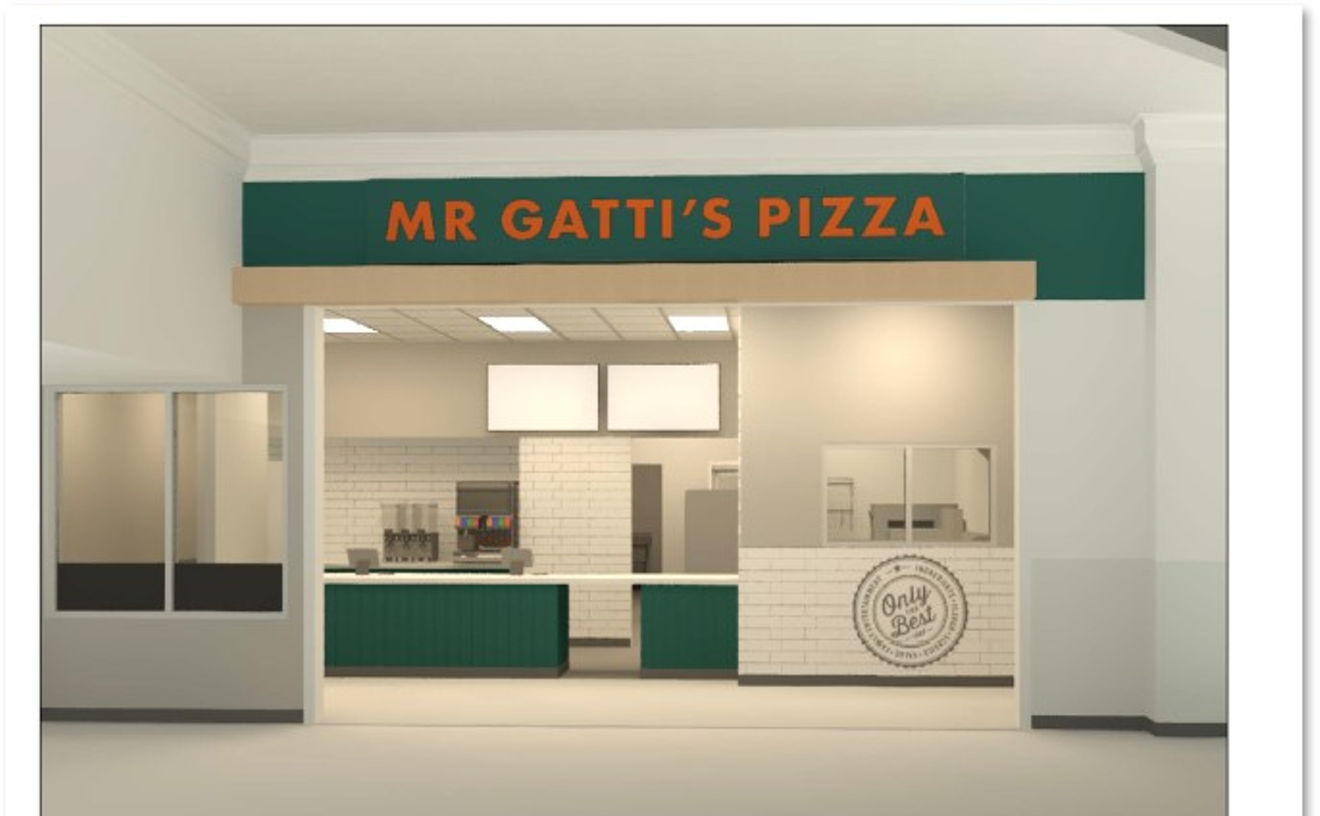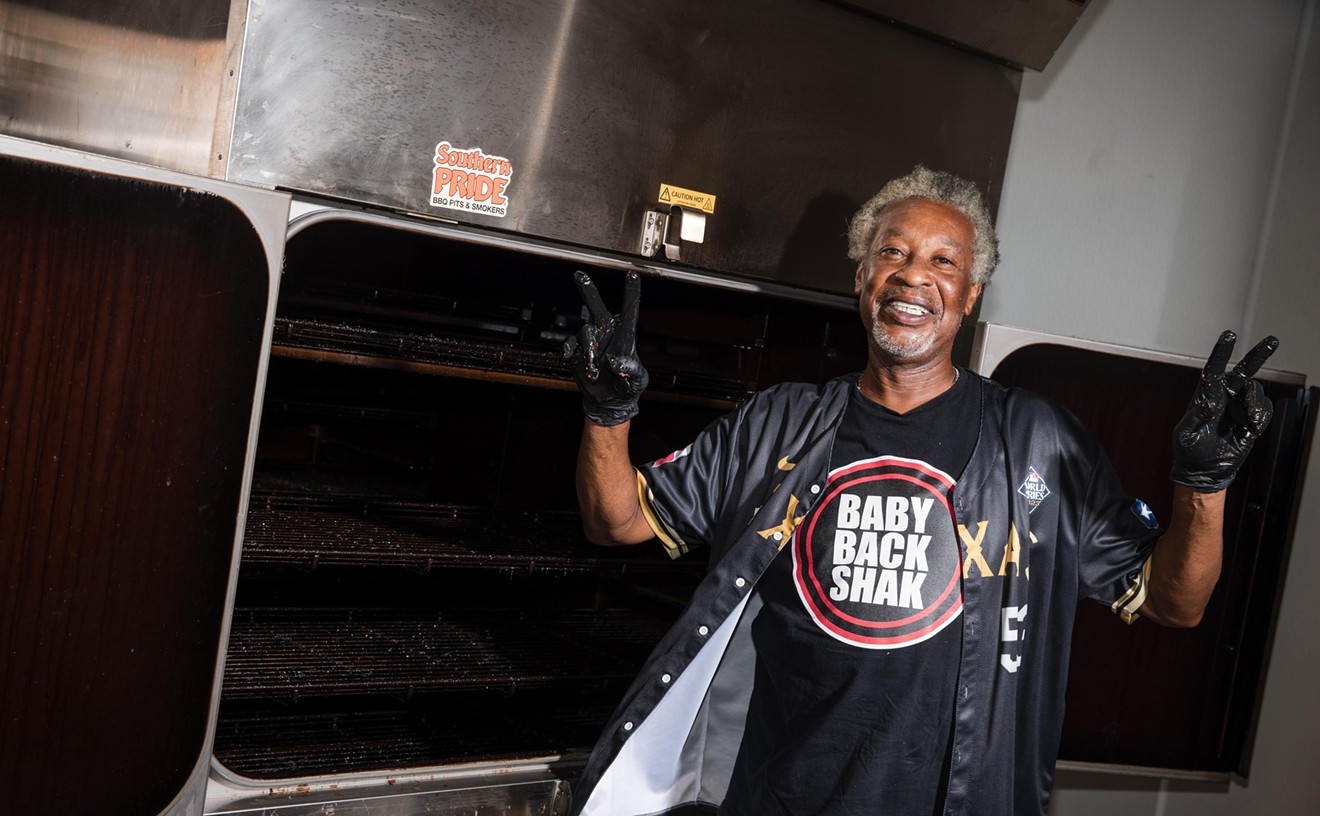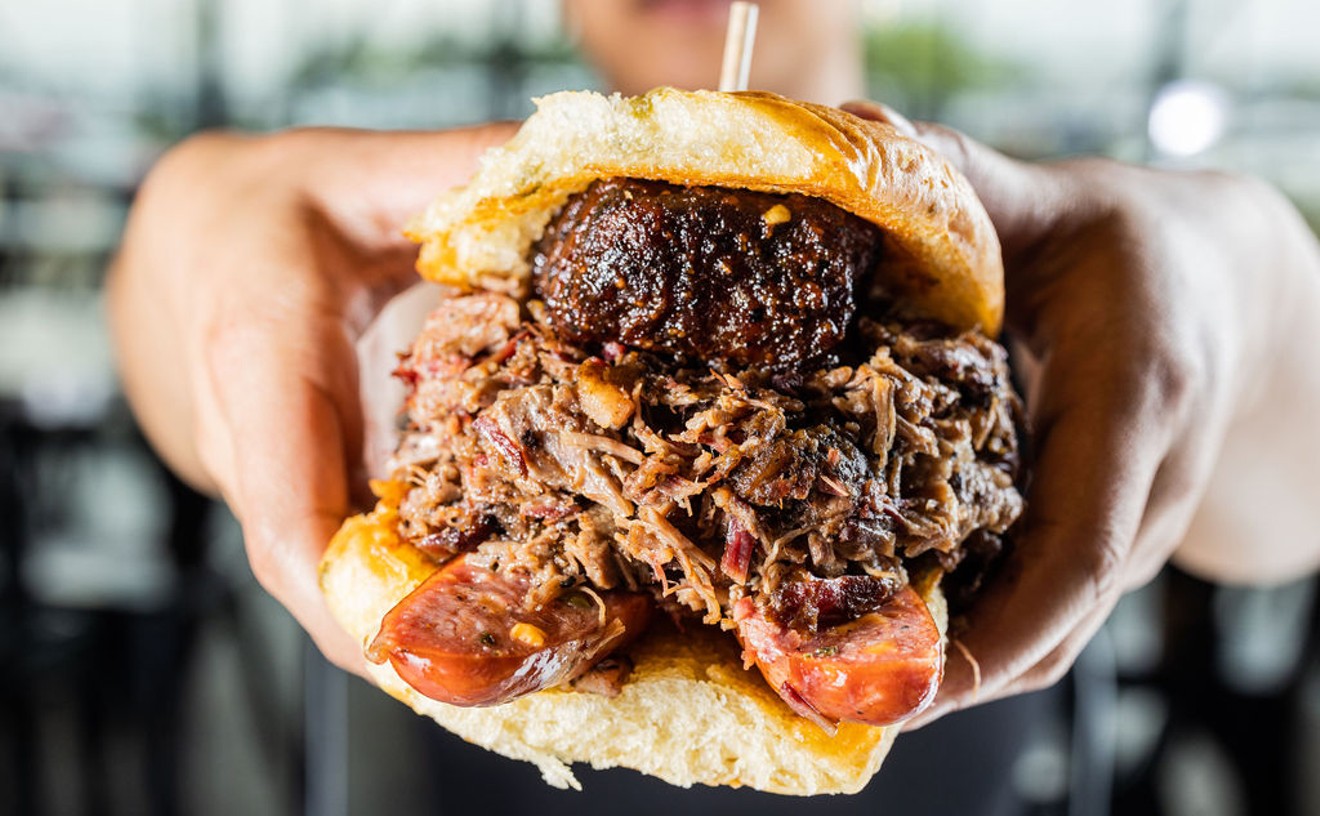The food safety report filed that day graded Mi Cocina at 60 points out of 100. The details weren’t pretty. Flies in the kitchen. No hot water for washing dishes. Cooked chicken sitting out at room temperature. Another problem for the restaurant: “toxics stored with food and toxic spray bottle used on food.”
In summary, the report concluded, Mi Cocina “fails to meet City of Dallas Food Protection and Education sanitation standards. 10 day follow-up inspection required.” (The restaurant did not respond to multiple requests for comment.)
That follow-up inspection never took place. Mi Cocina’s next health inspection came 221 days later, on March 27, 2017. The restaurant passed.
Thanks to explosive growth in Dallas’ dining scene and increased pressure from city leadership, food inspectors face staffing shortages, budget shortfalls and time crunches. Decisions by managers and politicians are making inspectors’ jobs even harder by reducing oversight on the city’s dirtiest kitchens.
The financial penalty assessed on a failing facility has been slashed by 80 percent. The online database listing inspection scores is filled with flawed or manipulated data. Inspectors are deliberately inflating restaurants’ scores. Mandatory follow-up visits to low-scoring restaurants rarely happen on time and frequently never happen at all.
Between Nov. 15, 2016, and Nov. 15, 2017, for example, city inspectors gave 18 food preparation facilities grades of 60 or below. They followed up on time with just one of the 18. Over an 18-month period from late 2016 to early 2018, Dallas issued 959 inspection reports requiring follow-ups within a month. Only 236 follow-up visits were ever recorded, most of them late.
The 22 inspectors are responsible for districts of about 300 food facilities each, all of which must be checked every six months. When needed, vacant positions are filled by temporary contractors. The goal, Shreve says, is to complete 55 routine inspections per employee per month.
The total workload depends on which businesses are due for review. A Dallas food inspector, speaking anonymously to preserve job security, explains the process.
“A convenience store with no open food can take like 15-20 minutes, and most of that time is spent explaining the documents they’re missing,” the inspector says. “A full-service restaurant that’s pretty clean can be 30-45 minutes, depending on how big the place is, but a bad restaurant that needs a lot of hand-holding can take over an hour. Writing out citations takes longer.
“Last week, I did 15 [inspections],” the source says. “Some weeks, I can do twice that; it just depends.”
“Honestly, we are judged each month by our number of routine inspections only, so if a place fails and they need a follow-up, that falls to the wayside until all the routines are taken care of.” – anonymous inspector
tweet this
Each facility is scored on a scale of 1-100. Anything in the 70-79 range is passing but requires reinspection within 30 days; anything in the 60-69 range is failing and requires reinspection within 10 days. Scores below 60 require reinspection as soon as possible.
The official target of 55 routine inspections per month has the worthy goal of making sure that all of Dallas’ food facilities get covered on a regular basis, but there’s a big problem: the word “routine.”
Shreve says that follow-up inspections and customer complaints are not included in the quota because the number “cannot be predicted each month” but that they are still tracked.
The anonymous inspector elaborates: “Honestly, we are judged each month by our number of routine inspections only, so if a place fails and they need a follow-up, that falls to the wayside until all the routines are taken care of.”
An abundance of data indicates that follow-up inspections do, indeed, fall to the wayside. The Observer looked at a random sample of 201 recent health inspections that necessitated follow-up visits. Seven establishments closed before the city could return, including downtown’s Sol Irlandes, which scored a 73 in December 2016 and closed April 30, more than a year later, without receiving another documented visit.
Of the 194 facilities in the sample that received follow-ups, just 66 — 34 percent — were inspected within the city’s self-imposed deadlines. The median follow-up was 13 days late, and 22 percent of follow-up inspections were more than 100 days late. The longest delay: a 341-day gap between visits to Cedars Social. (That restaurant has since found new ownership and a new chef.)
“I have follow-ups that should’ve been done months ago, honestly,” the inspector says. “I just don’t have time.”
Customer complaint data is harder to evaluate. Of the 1,204 restaurant complaints listed online, 21 cases were closed less than 10 minutes after a complaint was filed; in other instances, the date of the complaint resolution doesn't match the date an inspector visited. Assessing whether Dallas inspectors respond to food hygiene complaints in a timely fashion was impossible, but it is worth noting that, even including those allegedly resolved in mere minutes, the average response time was 16.8 days.
The Dallas Code Compliance website states that failing restaurants not reinspected within 10 days will close until sanitation workers can return. It also specifies that restaurants scoring below 60 must close immediately, to reopen only after a new, passing inspection. Neither of these statements is true. They have no obvious basis in city code, and Dallas inspectors ignore them. Shreve and the anonymous inspector agree that, in practice, closure only takes place if an “imminent health hazard” exists.
“An imminent health hazard is defined as having no water [hot or cold], sewage running on the floor in the food preparation area, a major pest infestation or no electricity. A low score does not necessarily represent an imminent health hazard,” Shreve says.
The inspector adds, “We’re more likely to write them a bunch of citations.”
On Aug. 29, 2016, Dallas inspectors made their first visit to a new downtown restaurant, Cafe Herrera. The restaurant received a 58 for “multiple critical violations,” including 10-day-old flan, “no correct hand washing setup,” leaking pipes and a “large amount of flies in kitchen.” Instead of closing, Cafe Herrera promoted a cornhole tournament on Facebook.
Owner Gil Bonifaz says he agreed to follow proper signage and paperwork rules, and the inspector agreed to skip a second visit.
“We followed up on the phone,” Bonifaz says.
Shreve could not confirm that account but said that Cafe Herrera’s report showed “a collection of violations but not an imminent health hazard.”
City officials returned to Cafe Herrera on Dec. 7, 2016, more than three months after the follow-up deadline and just three business days after answering the Observer’s public records request for the original report. The restaurant has passed every inspection since.
On a page called Dallas Health Inspection Horrors, David Lawhon maintains a table of restaurants with low scores, noting repeat offenders and marking the worst facilities with vomit and poo emojis. Lawhon is not a sanitation worker and never has been.
“My training in the area is limited to having viewed all of the episodes of Kitchen Nightmares,” he deadpans.
His project began more than a decade ago, after a series of regrettable restaurant meals and a case of food poisoning. At the time, the online Dallas inspection scores were written out in a simple list. But, he says, he knew that wasn’t enough.
“The information needed to be integrated, to be presented in a more engaging and accessible way, and to answer the simpler question, ‘What businesses should I be concerned about?’ rather than, ‘What is the score for every restaurant in the city?’” Lawhon says.
“The information needed to be integrated, to be presented in a more engaging and accessible way, and to answer the simpler question, ‘What businesses should I be concerned about?’" – David Lawhon
tweet this
He maintains a spreadsheet of every inspection conducted in the past 24 months. One spreadsheet he provided to the Observer is almost 25,000 rows long.
But Lawhon’s work is constrained by one big problem: The city’s data isn’t just badly presented. It’s wrong.
Many food facilities are mislabeled, making their data hard for customers to find. Keller’s Drive-In on Garland Road appears as “Jakks.” It scored a failing 60 in August 2017 for inadequate refrigeration and burger patties sitting out at room temperature. The follow-up visit was four months late. An Uptown favorite is misspelled “Kathy Trail Ice House.” The database claims there is an In-N-Out at 8817 Clark Road in Duncanville, the address of a Chevron gas station with a taco counter.
Central Market on Lovers Lane is listed only by department names, so customers looking for the store must search for vague terms like “grocery” and “kitchen.”
When a business closes and another opens, the old facility’s scores on the site are often assigned to the new one. The city website claims that Gung Ho, a restaurant that opened in 2018, was inspected in May and November 2016. Street’s Fine Chicken has an inspection listed 10 months before it opened.
“Clearly there is an error,” owner Marco Street says when made aware of the discrepancy. “The database possibly populates based on address as a search hierarchy.
“We have never felt anything other than gratitude and respect for the inspectors and their consistently fair assessment of facilities,” he says. “We are restaurant owners but also consumers and have always felt that they have the consumers’ best interest at heart.”
Shreve says there is “no known issue” that might cause facilities to have erroneous inspections listed online.
A more troubling source of error is deliberate manipulation. According to the anonymous source, if a manager uses the specific phrase “food safety inspection,” the implication is to ignore structural problems such as missing ceiling tiles or holes in walls. The source says management also instructs staff to “‘use your professional discretion’ to know when to give points back” if a restaurant is only one or two points below the follow-up visit threshold, “so we don’t have to go back.”
For example, a restaurant may earn a 78 but promise to resolve a small issue. In return, the inspector might agree to give the restaurant a passing 80 score, making a follow-up visit unnecessary.
The city’s online database suggests this compromise is widespread. It lists 54 inspections with scores of 78 and 45 inspections with scores of 79. The number of inspections with scores of 80, by contrast, is 754.
Shreve says the anomaly is simply because most restaurants achieve passing scores “based on their knowledge and training.”
The Dallas inspector also says follow-up visits are deliberately misclassified as “routine” by workers looking to meet their monthly quotas.
Shreve disagrees.
“This is not an approved behavior," she says. "This has occurred as an error when the inspector selects the service code type. Our supervisors regularly check for this type of error and work closely with the inspectors to ensure that this does not occur on a regular basis.”
But a majority of follow-up inspections are, indeed, misclassified. In October 2017, 61 inspections required follow-ups; three establishments then closed or disappeared from the database. The remaining 58 restaurants received follow-up inspections, but 41 were labeled “routine.” Two-thirds of the follow-ups failed to meet their deadlines. An inspection of Wingfield’s explicitly marked “follow-up” was 109 days late.
In 2016, Lisa’s Soul Food Cafe received two “routine” inspections on back-to-back days. Jade Chinese Buffet on Lake June Road received a 54 grade in 2016, then passed a new “routine” visit three days later. (Before the failing grade, Jade had not been visited for nine months.)
Luby’s Cafeteria, at 5600 S. Hampton Road, received a “routine” inspection on April 13, 2016 — except the the inspector noted on the report that it was in response to a customer complaint. Although the complaint was unfounded, the inspector discovered small flies on food, employees failing to wash hands, and unclean floors and eating surfaces. The report concludes, “10 day follow-up inspection required.”
The follow-up came exactly two months later. It, too, was marked “routine,” and lowered Luby’s score to 56. The flies were still swarming, and employees weren’t washing their hands because there wasn’t any soap. Google and Yelp customer review data show that the location stayed open, and the city didn’t visit again for four months.
Luby’s third inspection of 2016 was also marked “routine” and also found the restaurant failing, with prep equipment in “unsanitary condition” and “toxics stored above equipment.” Dead crickets had replaced the flies. The next inspection came six months later.
The chain ignored multiple requests for comment, but its story has a happy ending: As of January 2018, the Hampton Luby’s achieved a score of 90.
Dallas City Council unanimously passed an ordinance on October 28, 2013, altering the fee structure for food inspections. At the time, Dallas was still reeling from a KXAS-TV (NBC 5) report that many local restaurants had not been visited in years. The council reacted quickly, allocating funds for new hires and commissioning a new efficiency report on best practices.
Council member Philip Kingston introduced the ordinance.
“Falling behind on restaurant inspections correlated with no increase in food-borne illness, which tells us that we’re doing inspections wrong,” he said. “The staff responded to that, and this agenda item is going to rehab the way we do these inspections. It’s going to be way more efficient, and it essentially winds up in a fee reduction for businesses that are trying to develop our local economy. I don’t know of a better story of local government recently than this.”
But the ordinance made no mention of rehabbing the way that inspections are conducted. Instead, it focused entirely on reducing costs for local businesses. Some of the reductions, such as a lower fee when a restaurant changes owners, are uncontroversial.
The largest difference, in dollar terms, was to a fee that failing facilities pay to cover the cost of reinspection and as punishment for their unsanitary conditions. That $380 penalty was slashed to $110. In October 2017, the city dropped the fee again, to $71.
“I fail to see any rationale expressed as to why such a reduction in the licensing and inspection fees was either necessary or desirable,” Lawhon says. “There certainly wasn’t one expressed during the public meeting.”
Shreve says an independent consultant reviewed the fees and that the reduction has had “no known operational impact.”
Kingston claimed that the policy was not a problem.
“If inspections aren’t happening on schedule, that’s an operational failure. And I’d be upset given the substantial budget increases in that department.”
The truth is a little more complicated. Since the 2013-14 fiscal year, the departmental budget has indeed increased from $2.8 million to $3.1 million, but those numbers include a unit that combats mosquito-borne illness, and the increase has been offset by dramatic growth in the local restaurant industry. Budget constraints, Shreve says, are limiting new technology purchases, keeping the permitting process “very paper- and labor-intensive for both staff and our customers.”“We’ve been complaining about it for years, and they’ve done nothing. I know that our health department could be so much better, but management just wants to scrape by, and it’s crushing our souls." – anonymous inspector
tweet this
The group unhappiest with the situation might be the food inspectors.
“It sucks,” the anonymous inspector says. “We’ve been complaining about it for years, and they’ve done nothing. I know that our health department could be so much better, but management just wants to scrape by, and it’s crushing our souls.
“It’s all very fucked up. Morale is low.”
At least one potential revenue source is part of the solution: the fines assessed against failing businesses when they receive follow-up inspections. Given that inspectors found about 750 facilities requiring reinspection each year from 2014-17 — and potentially hundreds more that had their scores artificially rounded up to 80 — Dallas may have deprived its food inspection unit of more than $230,000 annually in penalties by lowering the fees.
Second, Dallas needs to reconsider the purpose of health inspections. The only performance measure specified in the city’s 2017-18 adopted budget is a target of 900 food establishment inspections per employee. But in practice, routine inspections are given priority over policing customer complaints and known problems.
To its credit, the city plans to tackle this goal soon. Shreve says Code Compliance is investigating a risk-assessment system that could change the frequency of routine inspections based on the likelihood that each facility poses a threat. The change would allow Dallas to focus its attention on repeat offenders and follow-up visits, with the trade-off that some low-risk facilities might receive inspections just once every two years.
If City Council approves the new risk-assessment system, it could begin as soon as this fall.
Third, the city needs to consider how to curtail the outbreak of grade inflation. Perhaps a risk-based system will give inspectors more freedom to prioritize failing businesses, but incentives to pad their scores may remain.
Fourth, Dallas Code Compliance should consider outreach programs for both business owners and the restaurant-going public. The department’s only outreach class covers swimming pool management.
“The inspection process itself is an education tool where the inspector is able to educate business owners on proper food handling and food safety,” Shreve says.
That may be true, but a preventative approach could have a bigger impact.
Finally, greater public disclosure is needed to hold food facilities accountable. That means easy-to-read online reports. It could also mean posting a facility’s most recent score in a front window or door, similar to the Scores on the Doors program in the United Kingdom or letter-grade signage adopted by New York, Los Angeles, Toronto and Las Vegas.
Critics, including many in Dallas city government, claim such a public signage system is simplistic. Shreve says Dallas does not use such a system because a letter grade can conceal deeper problems.
“We think it’s more advantageous to the customer to review the actual report as an establishment can receive a grade of A and still have major food safety issues, such as inadequate refrigeration, inadequate heat holding equipment or no hot water,” Shreve says. “These are major violations, but the score would still reflect in the 90s or as being an A. Simply providing a score or a grade does not tell the customer everything they need to know to make a good choice about where they dine out.”
Although Dallas recommends customers read full reports, the only ways to do so are to navigate the confusing, error-prone online database or to demand a copy from a restaurant manager in person. Shreve says that with a new departmental communication strategy, “we plan to do a better job ... educating the public on how to read the report.”
"A low score does not necessarily represent an imminent health hazard.” – Dallas Code Compliance assistant manager Mandy Shreve
tweet this
Public signage can have tangible benefits. A 2015 article in the American Journal of Public Health found that New York City’s adoption of letter-grade signs resulted in a higher probability of restaurants attaining grades of A, a higher likelihood that a failing facility would improve its score and a smaller proportion of businesses with consistent records of failure. The study also surveyed New York residents and found that the public signage law had an approval rating of 91 percent.
Some research even ties public inspection signs to decreases in communicable disease. New York City experienced a 14-percent drop in salmonella cases, and a report in the Journal of Environmental Health claimed that after a new signage law passed in Los Angeles, the city enjoyed and sustained a 13-percent drop in hospital visits related to any food-borne illness.
The drop in such hospitalizations in Los Angeles cannot entirely be tied to signs because, the study said, the county also financed “additional training of restaurant inspectors and enhanced efforts in educating restaurant owners and staff.”
This research is especially relevant as Dallas County faces rising rates of food-borne illness. 2017 data is still being compiled, but in 2016, the county set new record highs for both E. coli and campylobacteriosis. A 2015 national survey by the Centers for Disease Control and Prevention found 0.95 cases of E. coli per 100,000 citizens; the national goal is to reach 0.6 by 2020. Dallas County’s incidence rate is triple the national average.
According to a report by Dallas County Health and Human Services, increasing rates of campylobacteriosis “reflect national long-term trends.” But the CDC survey shows that although Dallas County incidence is slightly below average, the surveyed areas showed a slight decline between 2011 and 2015. Dallas cases nearly doubled.
It is unclear why these illnesses, as well as shigellosis, have grown more common in Dallas County in the last few years.
Until Dallas can ease the burden on its inspectors, reverse rules that have protected the city’s filthiest kitchens, remove incentives to manipulate data and establish transparent means of reporting failing restaurants to the public, consumers will continue walking into establishments without assurance that their meals will be prepared safely. There is no sign in the window to alert them that, for example, Palapas Seafood Bar on Greenville Avenue, which specializes in preparations of raw fish, has failed its last three inspections.
On Jan. 26 an inspector — returning to the restaurant after discovering “thawing octopus on floor” last year — found “toxics stored with food in prep sink,” holes in the ceiling and uncleaned drains. Palapas scored a 64, requiring a follow-up visit within 10 days. The next visit, mislabeled “routine,” came 17 days later, and the business’ score dropped to 61, for many of the same issues and for employees failing to wash hands or report illnesses.
Another “routine” visit followed on March 7, two weeks late, and found serious cross-contamination risks, a lack of hot water, unlabeled shellfish, “equipment improperly stored on floor,” bags of ice being used because of “lack of refrigeration” and, for the third consecutive report, employees failing to use hair nets.
The March 7 inspection resulted in a third consecutive failing score: 65. Palapas’ owners did not respond to requests for an interview.
Dallas inspectors have not visited Palapas since.















